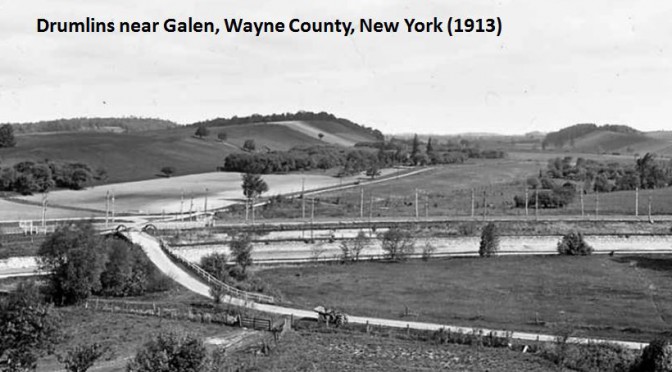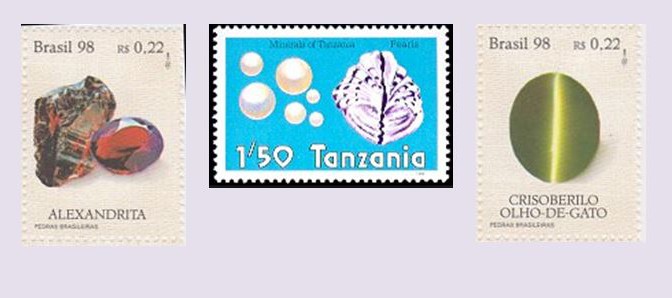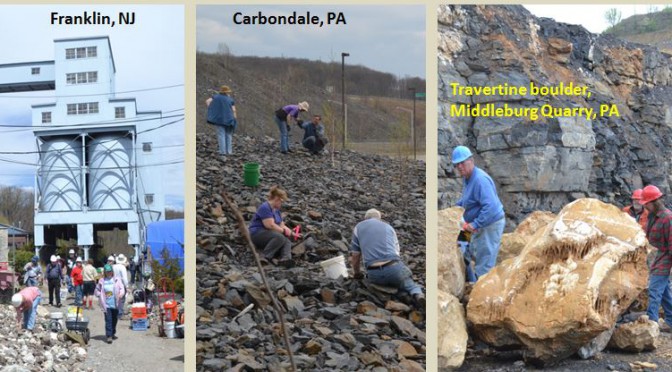
Published in the June 2016 WCGMC Newsletter
All of us who live or travel in Wayne County in western New York State know it is easier to travel north-south than east-west. Most of us know that is due to the elongated hills called drumlins that cover much of the region. And we also know that those geomorphological features were formed by the continental glaciation that covered western New York with ice a mile thick until their final retreat 12,000 years ago.
BUT, did you know that until very recently, glacial geologists could not agree on exactly how these elongated parallel hills came into existence. It was known that the drumlin fields were aligned with the glacial flow and retreat, but it was unclear whether they represent debris built up progressively during glacial advance and retreat or whether they were sculpted out of older sediment from previous glacial deposits. The debate has raged for over 150 years.
Continue reading Drumlins in Wayne County →

Published in the June WCGMC newsletter.
It is not quite fair to the rest of us, but folks with a birthday in June get a choice of two major birthstones. Pearl is the original modern gemstone for the month, officially named as such in 1912 by the National Association of Jewelers. However, alexandrite has been since added as a June gem.
Continue reading June Birthstones – Pearl and Alexandrite →

BOOK REVIEW: New York Rocks and Minerals: A Field Guide to the Empire State, by Dan and Bob Lynch (2016)
There is a new publication available entitled “New York Rocks and Minerals: A Guide to the Empire State”. It is authored by Dan and Bob Lynch and published by Adventure Publications of Cambridge, MN. The 2016 book is available online for less than $20 on Amazon.
For each of 105 rocks, minerals, and fossils found in New York State this book provides a page of pictures designed to illustrate the specimen’s most characteristic identifying traits and an opposing page providing information on environment, what to look for to identify it, size, color, occurrence, and a notes section with other pertinent information. The format and presentation is very easy to use. In addition, beginners should enjoy the several page overview of New York geology. The 14 page “Quick Identification Guide” based on color and then expanding into other properties may be just the ticket for some.
Continue reading A Field Guide to the Empire State →

The end of April was an active and exciting period for Wayne County Gem and Mineral Club diggers with two trips, each of three days duration. While we wait for warmer weather to our north, the club ventured to the neighboring states to our south, New Jersey and Pennsylvania.
Retired, collecting minerals and stamps, growing flowers and vegetables, and when the spirit moves, toying with technology



